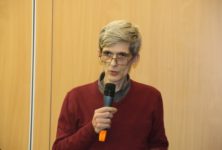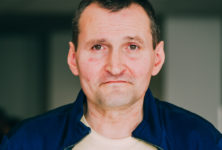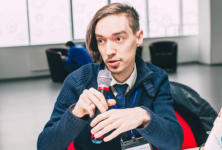A fashion show called “Fashion AIDS Line” and a creative flash mob dedicated to combating discrimination against people living with HIV took place at the 6th International HIV/AIDS Conference in Eastern Europe and Central Asia held April 18-20.
Fashion show at the EECAAC 2018 closing
The conference was attended by participants from over 70 countries: HIV/AIDS activists and human rights advocates, state officials, representatives of international organizations and embassies from the participating countries, journalists from the EECA countries media, and others.
The fashion show spurred controversial feedback from the event participants in the social media, where each of the speakers expressed their grounded position as to the feasibility and appropriateness of such actions in counteracting the HIV/AIDS epidemic. Read about it further in this material …
Vinay Saldana, UNAIDS Regional Director for Eastern Europe and Central Asia, and Vera Brezhneva, UNAIDS Goodwill Ambassador to the EECA countries, opened the “Fashion AIDS Line” and welcomed all the guests, emphasizing that “It’s fashionable to know your HIV status”, calling for regular testing for HIV, because fashion, as a modern culture phenomenon, can significantly contribute to overcoming stigma and discrimination.
The namesake contest “Fashion AIDS Line” was held in Armenia, Belarus, Kazakhstan, Kyrgyzstan, Moldova and Russia. One of the mandatory participation conditions for designers was the presence of the red ribbon, the international symbol of the fight against AIDS, in the collections. The show also demonstrated the so-called “red” collection created by designers from different regions of Russia under the “Russian Designers against AIDS” Project of the Ministry of Health of Russia and Mercedes-Benz Fashion Week.
The initiators of the competition: the UNAIDS team in Eastern Europe and Central Asia and the Joint Program team in Armenia, Belarus, Kazakhstan, Kyrgyzstan, Moldova.
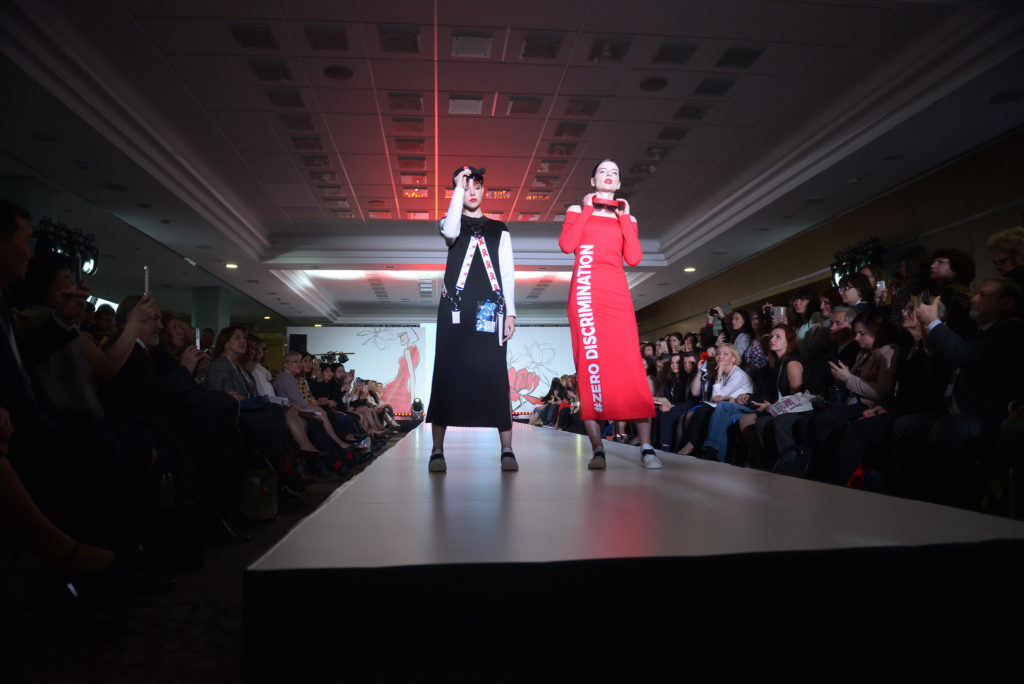
Фото: EECAAC 2018

Фото: EECAAC 2018
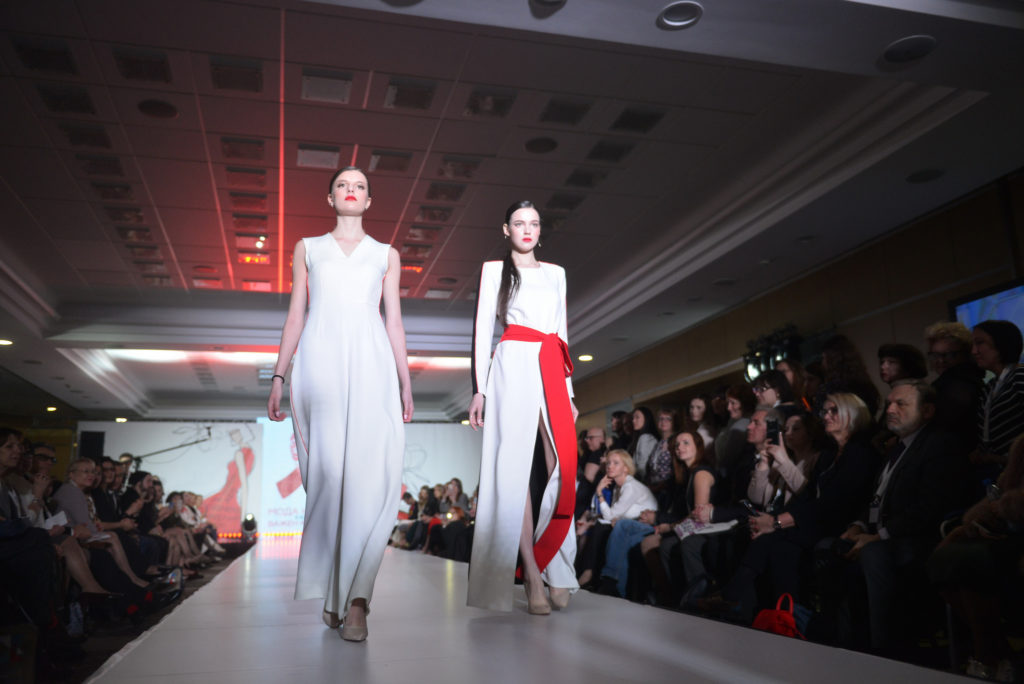
Фото: EECAAC 2018
The 30 minutes’ creative flash mob was a special activity at the EECAAC 2018 closing, during which the participants created the picture on a 4X3 meter canvas, expressing the idea of fashion for the world where everyone is important. The painting creation process was broadcast live and the whole process was coordinated by the famous artist Artur Saryan, sketching his vision of the world where everyone is important. Together with Vera Brezhneva and the team of designers participating in the final show, they painted it on a 4-meter canvas.
30 minutes in 30 seconds: video flashmob:
Как рисовалась картина о мире, в котором важен каждый
30 минут рисования за 30 секунд. Художник Артур Сарян показал, как он видит мир, в котором важен каждый. А дизайнеры – победители конкурса Fashion AIDS Line – и Посол доброй воли ЮНЭЙДС в странах Восточной Европы и Центральной Азии Вера Брежнева вместе с художником это перерисовали на холст размером 3 на 4 метра. Художественный флешмоб состоялся в рамках VI Международной концеренции по ВИЧ/СПИДу в Москве Eecaac2018#FashionAIDSLine #unaids #eecaac2018
Gepostet von Fashion AIDS Line am Montag, 23. April 2018
Feedback
The fashion closing of the Conference immediately caused mixed responses from the event guests and activists from the region. Frankly speaking, I did not pursue the goal of collecting each and every feedback. I chose these 3 opinions supported by the relevant arguments and I want to share them. I think that while they are differing, each of the opinions deserves attention from a wider audience.
Therefore, some participants of the EECAAC 2018 shared their opinions about the performance in the social media:
Irina Teplinskaya, specialist in RR and communications of the Autonomous Non-profit Organization “Center for Social Assistance to PWID”: “Thank God, this extravaganza is over, it was a feast in time of plague. I’m finally heading home, to the best city on earth! The closure of the conference and the dinner was a kind of the last day on earth – it all felt like there is no tomorrow … That fashion show, the omnipresent Vera Brezhneva, which has been showcased for many years as a symbol of the fight against AIDS, with whom people from the remote places are eager to make a picture. Probably, Vera is a good person, but I doubt she’s ever seen the true face of AIDS, she never attended an intensive care unit of infectious diseases and TB hospital, never tended the rotting abscesses of desomorphine (“crocodile”) users. Many people from regions had the silent question “what is it for?” in their eyes. What would we need this senseless show and a waste of money for, when we are already running short of HIV drugs, although the year has just begun? What is it for, if we never had and are not likely to have effective prevention among vulnerable populations? We do not have crisis centers for women with children, free public rehabs are drastically lacking! What is it for, if this money could support a whole year of providing therapy in several regions? We have nothing to be proud of, we are the third major HIV/AIDS epidemic area after Africa! But Africans do not throw lavish parties, they are grieving … And Africa with its low standard of living is quite understandably prone to the epidemic, with its expensive prevention and treatment. And we? And we, as always, are going to make an important political move: we will sing and dance and develop new fashion collections dedicated to the fight against AIDS. We are quick to celebrate Russia’s championship in ANY ratings – be it the gold medals of our Olympic hockey team or the third place in HIV morbidity and AIDS mortality”.
Anastasia Petrova, AFEW International’s contact person in Russia: “Friends, I cannot help but speak out, although I did my best to avoid it. I agree with Ira, but only to some extent. From the point of view of key populations, this may seem a nonsensical farce. But as a PR manager I will say, what the show does have the point, in terms of working with the general population. And it is not only about prevention, but also about reducing stigma. Vera Brezhneva articulates to the “general population” that PLWH are great guys, and it works 10,000 times better than when someone of us speaks of it. For me, talks like that among such respected professionals as you are, seem quite weird, guys”.
Yevheniia Prokhoda, employee of the Krasnodar Regional Public Organization “Equal Dialogue”: “Interestingly, the fashion show triggered quite mixed perceptions … For me, the podium culmination of the conference closing ceremony had a strong effect, it was deeply shaking emotionally, conveying a message to those who tended to stay aloof from what is happening, withdrawing from the problems which the community showered on them in these days. Mr. Pokrovsky watched the show standing, the audience wept, an international specialist fled to the dressing room unable to cope with her emotions. It was like all the facets of stigma, bias, invocation, perhaps, something else catwalked before the audience… During the show I felt shivers. And, of course, I will keep and cherish cool photos with models. I am not an expert in the trendy fashion, but I have the photos of the models that convey powerful metaphorical images for me: the virus man, the X-ray man, the sobriety man, man-a backpack of stones, an icon of pre-revolutionary Armenia − a big-hearted woman. Masks also are an element of the modern HIV-conscientious fashion. I would like to learn more about this collection, I would like that the decisions-makers could see and understand it”.
Fashion as a modern culture phenomenon
There are a lot of research papers and opinions on this subject. At the same time, everyone clearly states that the mass nature of the fashion reflects the societal attitudes, conveying the specifics of its experiences, scale and diversity.
In my opinion, fashion is a perfect indicator to demonstrate the actual social transformation trends. Of course, fashion cannot be considered impartial, since this is always a projected reflection of the creator’s ideas. At the same time, it is, as a rule, “in tune with the times”, highlighting the actual facets of everyday life, events and processes. Obviously, fashion is a factor that predetermines many changes in various spheres of social life, it is able to influence the nature and individual aspects of human activity. Yes, it does not happen instantly, but rather takes time, yet the fashion is undoubtedly able to change the public opinion and attitude to a particular issue. In this context, the fashion, acting as the regulator of social behavior of individuals and groups, can transform into a method of social action – a tool for influencing the public opinion.
I am convinced that a tool called “fashion” is not a cure-all solution for the problems, but we should not underestimate its ability to overcome stigma and discrimination.


 ПОИСК ПО САЙТУ
ПОИСК ПО САЙТУ  поиск по ресурсному центру
поиск по ресурсному центру 
